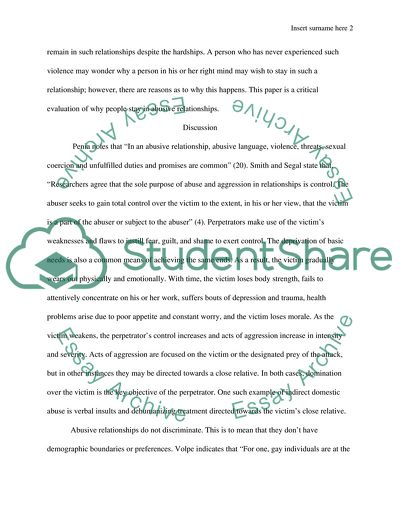Cite this document
(The Reasons Why Some People Stay in Abusive Relationships Despite the Term Paper, n.d.)
The Reasons Why Some People Stay in Abusive Relationships Despite the Term Paper. https://studentshare.org/sociology/1776309-write-an-essay-in-which-you-explain-the-reasons-why-you-believe-some-people-stay-in-abusive-relationships-despite-the-risks
The Reasons Why Some People Stay in Abusive Relationships Despite the Term Paper. https://studentshare.org/sociology/1776309-write-an-essay-in-which-you-explain-the-reasons-why-you-believe-some-people-stay-in-abusive-relationships-despite-the-risks
(The Reasons Why Some People Stay in Abusive Relationships Despite the Term Paper)
The Reasons Why Some People Stay in Abusive Relationships Despite the Term Paper. https://studentshare.org/sociology/1776309-write-an-essay-in-which-you-explain-the-reasons-why-you-believe-some-people-stay-in-abusive-relationships-despite-the-risks.
The Reasons Why Some People Stay in Abusive Relationships Despite the Term Paper. https://studentshare.org/sociology/1776309-write-an-essay-in-which-you-explain-the-reasons-why-you-believe-some-people-stay-in-abusive-relationships-despite-the-risks.
“The Reasons Why Some People Stay in Abusive Relationships Despite the Term Paper”. https://studentshare.org/sociology/1776309-write-an-essay-in-which-you-explain-the-reasons-why-you-believe-some-people-stay-in-abusive-relationships-despite-the-risks.


